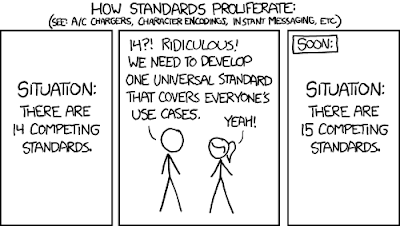There is a post over at the D&D Next development blog about backgrounds and themes. I can already hear the old school groans. Oh no, more sets of options that can be used for character optimization! More complexity! But stay with me, I actually think there are some really interesting ideas here. In the article, backgrounds are described as a bundle of skills and themes are presented as a collection of feats. Choosing a background explains where your character came from, and choosing a theme identifies how the character plays. So far, so much like ACKS templates, right? Or Second Edition kits? Well, sort of, but not only.
This background/theme split actually makes a lot of sense to me. I like it because it focuses on character concept rather than character function. This is a move away from the focus on “role” in Fourth Edition. In 4E, role is actually more important than class. Using backgrounds and themes, rather than selecting the skill athletics and a feat that gives a bonus to ranged combat, a player might select the soldier background and the sharpshooter theme. You don’t even really need to be familiar with the skill and feat descriptions (assuming they choose the background and theme names well). You just need to pick fighter, soldier, sharpshooter. Done. More examples from the article:
The first theme you choose is broadly descriptive and flexible. Think Leader, Sharpshooter, or Skirmisher. When you adopt your second theme at 6th level, you might choose another basic theme or you might choose something that grounds you a bit more in the game by selecting an advanced theme. Currently, advanced themes, in concept, resemble the prestige classes from 3rd Edition. They focus your character a bit further, building on the foundation established by another theme, to reflect deep specialization or some character-defining quality. Here are a few ideas off the top of my head. A Sharpshooter becomes an Arcane Archer. A Tempest becomes an Eldritch Knight. A Lurker becomes a Shadowdancer. A Mystic becomes a Necromancer or Enchanter or Abjurer.
A wizard specialist would actually be something you grow into, not something you start as. This makes sense to me intuitively and also follows the principle of character elaboration through play rather than optimized builds constructed before the game.
Background and theme lists also provide a way for the referee to tailor the player interface to a given campaign without requiring the players to read a large setting infodump document. (Such lists might be amenable to random tables, too, for really quick character generation.) One of the examples they give is a set of backgrounds and themes that might be appropriate for a Ravenloft game: Occultist + Avenger, Commoner + Werewolf, or Bereaved + Revenant. That’s only six words right there, and I bet you already have a pretty good idea about the style and content of that campaign (though I have no idea what “revenant” has to do with class play style).
I also like the idea of getting a new theme every five levels rather than multiclassing. It would fit well with E6-style level limits. If someone wanted to play, for example, an E5 game, then the second theme would essentially be an endgame prestige class. More complicated characters would be possible for those that wished to run campaigns with a higher level cap. Blending magical and mundane themes could lead to very interesting non-stereotypical characters (like a wizard who takes the sharpshooter theme) without the blandness of wizard-4, thief-2 (or whatever). This may also help prevent some of the multiclassing abuses like taking first level in several classes just to get the basic class features. From the article:
As I mentioned last time, I can imagine the fighter’s suggested background being soldier. That tells the story of the fighter throughout the editions. By replacing soldier with priest, I suddenly have a very different sort of fighter—even if the mechanical adjustments are shallow and focus on noncombat task resolution. Such a character might have been a temple guard, a crusader, or even Friar Tuck, armed with a quarterstaff.
And, for those groups that like just picking skills and feats directly, it should be immediately obvious how to do that (“DM 5: Come up with your own background by choosing up to four skills”). Or, one could use backgrounds and themes in a more abstract way, akin to the old secondary skill system.
Now, that’s not to say that this design might not devolve into endless options, but I think it has potential to work well with multiple play styles. As the article suggests, if you don’t want to play with skills, the way to do that is to run a game without backgrounds, and if you don’t want to play with feats, the way to do that is to run a game without themes. Elegant, and by reframing the issues it might also help get people to try playing other styles. I could imagine a tactical gamer willing to try a game without themes and an old school player willing to play a game with backgrounds, especially if all the other rules elements that they are familiar with stay the same. I think this is the most innovative and promising design preview I have seen regarding 5E yet, and one of the few that really starts to show how the system might support multiple play styles an a modular way.






